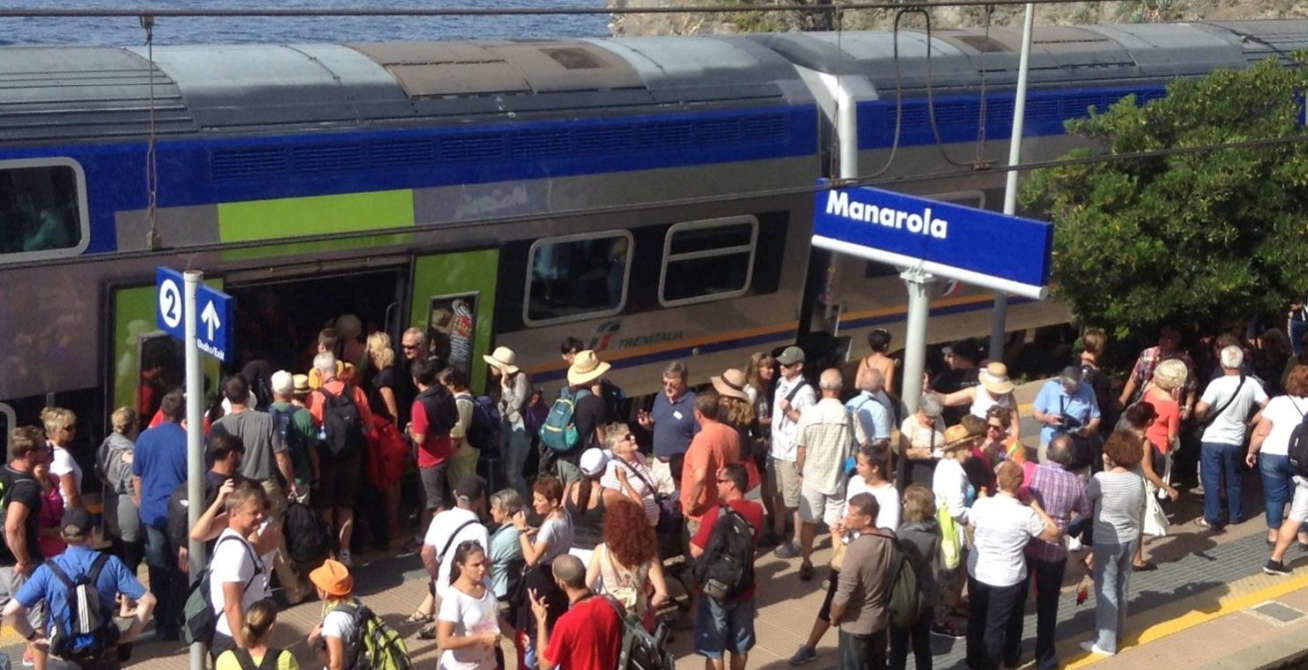We read with interest this intervention by Giacomo Montanari on Finestre sull’Arte, which we share together with some observations, especially related to our Ligurian reality.
For many years we have been continuing to reiterate, in the appropriate institutional venues, that the main cause of overtourism and in the Ligurian case, more properly, of overcrowding, in our view, lies in a promotion/narrative of places, on a global level, that creates misleading and disconnected expectations with respect to the reality of the places visited
Promotion requires long-term vision and must be proportionate to the capacity (also in the sense of “capacity”) that particular locations have to receive flows in a sustainable way. Telling landscape and cultural assets as a wonderful Disneyland, place of the Dolce Vita, presenting their user, as is often done through the images posted by the most diverse influencers, as an unbeatable consumer of aperitifs from the easy selfie, is not what is needed to educate the appreciation of our territory.
Montanari says it well when he says that cultural and environmental assets belong to everyone: we believe that charging for access to inhabited areas where communities live is, in itself, a way to distort them. We are also convinced that renting out villages and hamlets for private use, for parties or banquets, as has happened, is ethically unsound and gives the idea that money can buycolonize cultural and natural heritage, making use of it as one prefers, without even asking “what” that place is.

Respect for cultural heritage and the environment should be taught, we agree. There are many countries in the world where art, architecture and urban planning are not subjects of study even in secondary schools, but we are convinced that these teachings, together with proper environmental and civic education, should be part of the basic curriculum of any Italian citizen.
We are in contact with visitors constantly and sometimes for several consecutive days with the same people. When the tourist arrives at a location, he often finds in the guide a first contact with that place: a person who narrates the territory as it is, with its beauty but also with those rough edges that the “glossy” promotion does not let through. And therein lies his or her role of “well-rounded” popularization: art and history, but at the same time topicality and the need for respect.
The tour guide, who practices a profession recognized (*) and also regulated at the European level by CEN, meets people from all over the world, from all walks of life and of all ages on a daily basis. Everywhere in our territory there are good rules to follow, and those who move accompanied by a guide are directed to correct and respectful behavior towards heritage and “safe” in case of weather alerts.
With the new Law 190 of Dec. 13, 2023 and its amendments in Law 56 of 29.04.24 we have been penalized by a lowering of the requirements, including linguistic requirements, for access to the licensing exams (an anachronistic fact because for a long time the majority of tour guides have included academic studies in their curriculum) and the creation of a “national” guide figure. Unfortunately, all our appeals have gone unheeded.
Our invitation to those who want to practice the profession in the future with loyalty to the client is to specialize in one or more territories of our country - something the new law leaves as an option - and to make them their own, to get passionate about them, so that they can tell the story “from the inside” ... because this profession is made of more than just notions. Our hope is that future specialization courses will match the complexity of our beautiful nation.
(*) the definition of our profession in the new legislation in a commentary
Warning: the translation into English of the original Italian article was created using automatic tools. We undertake to review all articles, but we do not guarantee the total absence of inaccuracies in the translation due to the program. You can find the original by clicking on the ITA button. If you find any mistake,please contact us.